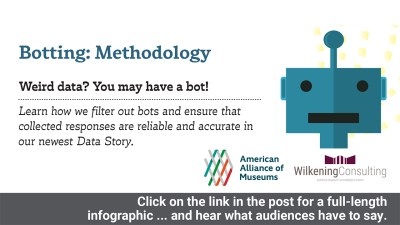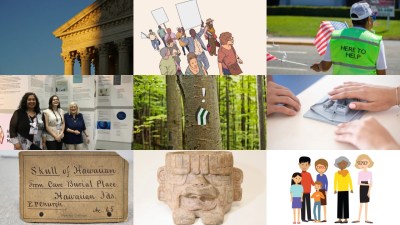When I was a kid my dad got interested in growing big pumpkins—the kind that require several people or a forklift to pick up. To grow enormous pumpkins you need good seeds and soil, but the real key is to pinch off almost all of the blossoms so that the plant concentrates its energy on a couple of pumpkins instead of a bunch of them. There are certainly advantages to growing a lot of little of pumpkins, but it’s the big ones in the patch that really stand out.
If you replace “pumpkins” with “projects and programs” you get at the heart of a leadership challenge in the museum field. Museums have limited resources, but are constantly besieged by proposals for projects that our stakeholders think we should be doing. The truth is that oftentimes they’re right. There are thousands of projects we could start that are worthy of our missions and would benefit our communities. The irony is that the more engaged we become with our constituencies, the harder it is to say no to new ideas.
In the last couple of months I’ve turned down requests to:
- Design and build a traveling exhibit for a statewide human rights organization;
- Make conservation recommendations for collections housed in a sister museum;
- Partner with a local non-profit to provide historical content and research for a website.
All of these are good projects, and all of them mesh with our mission and expertise. However, each request also siphons away time and energy from what we’ve already committed to do. We’ve already got a lot of pumpkins on the vine, and adding more will result in too many little projects with no chance to grow.
Skip over related stories to continue reading articleIf the difference between management and leadership is that managers do things right and leaders do the right things, then an essential leadership skill is the ability to say no. In his book Execution: The Discipline of Getting Things Done (2002) Larry Bossidy reminds us that good ideas and effective strategies are a dime a dozen—it’s the ability to execute that separates mediocre leaders from great ones. Bossidy and his co-authors Ram Charan and Charles Burck argue that a leader’s role is to say yes to very few projects and then push hard to achieve the maximum benefit. In fact, they argue that the ability to choose the perfect project is much less important than the capability to settle on one and ensure it grows to fruition. The discipline to turn down a host of opportunities in order to protect the resources required to do one or two things well is an essential aspect of leadership.
I acknowledge that it’s really hard to say no and I feel guilty every time I do it. However, I know that if I want my institution to succeed I need to pinch away most of the projects and tend the remaining ones carefully. When you’re besieged by ideas for new projects, consider very carefully before you say yes. Then, once you commit, go as big as possible—spend time and money on marketing and evaluation, and grow the project until it stands out from all the other pumpkins in the field.
Mr. Trevor Jones is Director of Museum Collections and Exhibitions at the Kentucky Historical Society. He holds BA degrees in history and German from Grinnell College, an MA degree in history and Certificate in Museum Studies from the University of Wisconsin-Milwaukee, and Project Management Professional (PMP) certification from the Project Management Institute.









Comments